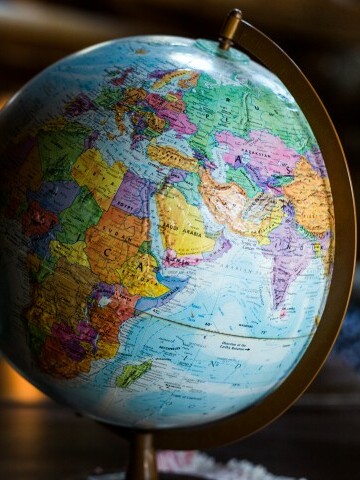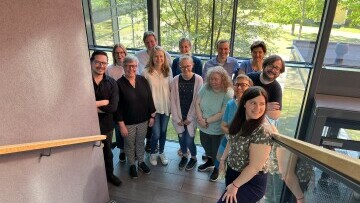
Bloggar
The RDI Bioeconomy profile at Novia UAS

Profiling, strategies, visions, implementation, all very important but can feel like just words to fill up space in an organization’s steering documents. Let me take this opportunity to talk about how we are trying to quietly counteract that trend at my workplace, the RDI team at the faculty of Bioeconomy in Novia UAS. I would like to take a few minutes of your time to explain how we think about bioeconomy and what our profile has turned out to be. First bioeconomy, a buzzword fifteen years ago, having turned into “elevator music” in today’s world. This is a quote straight from Wikipedia about bioeconomy:
“Biobased economy, bioeconomy or biotechonomy is economic activity involving the use of biotechnology and biomass in the production of goods, services, or energy. Bioeconomy aims to reduce our dependence on fossil natural resources, to prevent biodiversity loss and to create new economic growth and jobs that are in line with the principles of sustainable development”
The same source states that the term was first defined already in 1997 by Juan Enríquez and Rodrigo Martinez and published a year later in Science. Since, bioeconomy has gained enormous traction and already ten years later it was adopted by the EU and several countries had their own bioeconomy strategies. In Finland we had our first bioeconomy strategy in 2015. At the same time as the Finnish strategy was launched Novia changed the name of the then department into department of Bioeconomy, later faculty of Bioeconomy.
Ok, so we have been at it for 10 years soon, we should know what we are doing by now. Luckily, we do! Our profile shares the aims above 100%, but we have not gone the way of biomasses, bioengineering, and high-biotech. We have taken another road, a road perhaps less travelled although I am quite unsure about that, but a road less talked about for sure. Why? Maybe because nature-based, sustainable, local, and artisan has not smelled of big money and industry? It smelled more of tree-huggers, woolen socks and grannies. But all that has changed over the last years. The global crisis has brought up our need for radical shifts and transformation, and with every blazing hot summer and flooding of residential areas the concern and need for change grows bigger.
At Novia, RDI has been boosted in 2024 by adopting a model of teams with dedicated team leaders. This has further helped us in clarifying our profile and been a reassurance that all the hard work that has gone into RDI at bioeconomy over the years has been foreseeing the needs today and, in the years to come. Our profile is in systems level understanding while looking for solutions locally. We have adopted the framework of iteration and co-creation from design thinking, without even realizing it at first. Now that design thinking has become mainstream, we have tapped into the tools this approach brings along. And in the true nature of Universities of applied science, we apply science to implementation and let implementation influence science. We have this possibility because several of our team leaders are scientists and dedicated hands-on problem solvers.
The topics we work on are many, but they are all interconnected and support each other. Topics also change over the years as society and our understanding changes. For instance, soil health is something that was only talked about in biodynamical circles twenty years ago but now it is on every farmers mind. The degraded soil ecosystems in combination with the need to cut dependency on fossil fuels, rising temperatures and heavy waterfall has caused a wicked problem in food and feed security, livelihood, and society at large. Our contribution to finding solutions is a combination of finding new ways to farm adapted to our conditions, together with finding like-minded and curious people who want to be a part of the process. We study and promote combining the primary production of plants with the keeping of animals, something of a revolution 12-7 000 years ago called the neolithic revolution, so not very novel at all. Processing the produce, making products with a unique flavor and terroir, is another mega booster of things like biodiversity restoration and local communities. We need healthy soils, and natural pastures mixed with equal amounts of knowledge, artisanship, and novel solutions to everything from tools to production localities to succeed. What we get is something unique, not just to eat but a landscape and environment that is vibrant and living. Another aspect is the “no additives” approach we have adopted. Boosting and supporting biological processes requires a lot of knowledge and trial and error-mentality to get it right, but it is possible and necessary for the long haul. This goes for basically anything we deal with, be it cheese, soil or farming. Add as little as possible, add only when needed, make sure you know what to add and only add things that support the good things that are already there.
In terms of profile, we also have a few other defining elements, such as the use of geospatial data and studying the human - nature relationship. This affects decision making daily and influences basic things like democracy and well-being, which are no small questions today. Planning and governing our natural resources sustainably are a basis of our survival, again this is not new, but what it means in our societies today is not always easy to know for decision makers be it on the level of an individual or a municipality. We have a strong push forward in this area with our recently recruited expertise in the areas of geospatial planning, human-nature relationships, and energy transition.
The multidisciplinary approach that is key to our profile is made possible through a diverse funding base. We have support from our local community through the city of Raseborg, and foundations supporting education, but we are also funded by highly competitive funds for research and development not forgetting the results-based funding from the Finnish ministry of education that supports educational institutions in Finland. All in all, just the palette of funding alone making all this possible is a showcase of collaboration and a mutual will to find solutions.
Ok, my few minutes are up, thanks for reading! I hope you will join in the discussion and the finding of solutions in bioeconomy, no matter where you come from. Talk to you soon 😊
Sources:
https://en.wikipedia.org/wiki/Bioeconomy
Enríquez-Cabot, Juan. "Genomics and the World's Economy. "Science 281 (14 August 1998): 925-926.
"Sustainable growth from bioeconomy – The Finnish Bioeconomy Strategy" (PDF). Bioeconomy.fi. The Finnish Ministry of Employment and the Economy.
Photo from RDI Bioeconomy Seminar in June 2024.
The blogpost has been reviewed by Novia's editorial board and accepted for publication on 27.8.2024.![]()
Bioekonomi
Blogginlägg som är granskat av Novias redaktionsråd är utmärkta med nyckelordet "Granskat inlägg".
Vi följer CC-BY 4.0 om inget annat nämns.
Ansvarsfriskrivning: Författaren/författarna ansvarar för för fakta, möjlig utebliven information och innehållets korrekthet i bloggen. Texterna har genomgått en granskning, men de åsikter som uttrycks är författarens egna och återspeglar inte nödvändigtvis Yrkeshögskolan Novias ståndpunkter.
Disclaimer: The author(s) are responsible for the facts, any possible omissions, and the accuracy of the content in the blog.The texts have undergone a review, however, the opinions expressed are those of the author and do not necessarily reflect the views of Novia University of Applied Sciences.